Best Kale Pache Recipe{in 6 steps}_Benefits+18 Notes
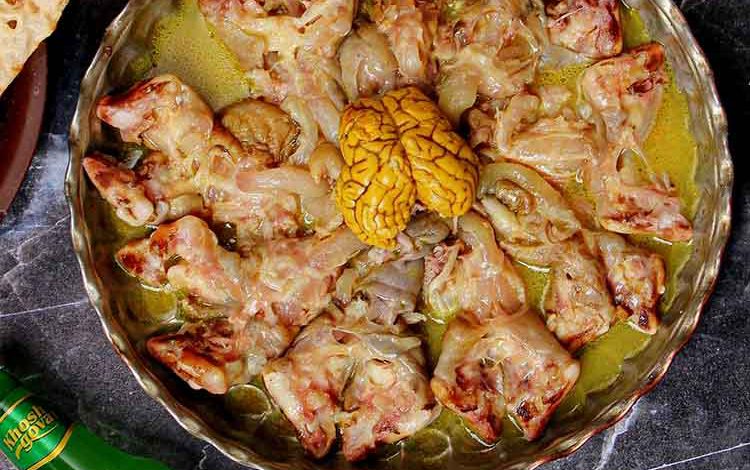
When the weather gets cold, people tend to eat hot and high-calorie foods. Kale pache is one of these types of food. I hope you will never break your arms and legs. But if this happens, don’t forget pache, especially your legs.
Pache is an excellent remedy for sprained limbs, especially the shoulder. It is an excellent cartilage-building food.
Because it is rich in calcium, sheep’s leg is good for bone fractures and osteoporosis treatment.
Traditional and Iranian food has its own fans throughout the year and is often the favorite food of the old generation and of course, the young generation also likes it.
This food is very fatty and energetic.
What is kaleh pacheh ?
Kale Pache is a traditional Iranian breakfast made from sheep’s head, hands and feet cooked with special spices. A special breakfast soup that is rich in calories and vitamins and is prepared with lemon juice and Sangak bread in Iran and Afghanistan.
Generally, kale pache is made of cooking the head, hands, and feet of sheep. The components of this food also include ears, tongue, brain, eyes, facial meat, and legs. The juice of this dish is eaten as an appetizer with bread.
Kale pache is a slow-cooking food and it takes a long time to cook. Kale pache is sometimes eaten with lemon juice and cinnamon for faster digestion and the best time to consume it is in the morning.
Unbalanced and inappropriate consumption of foods such as kaleh pacheh due to saturated fats and high cholesterol can disturb sleep at night.
Because this food is heavy and slow to digest, it causes digestive problems and a lack of sleep.
After eating kale pache (sheep head) drinking Persian tea and lemonade is recommended.
The main feature of this food is its high-quality protein. Proteins are nutrients that play an important role in the growth, repair, and construction of body cells and tissues, and consumption of their animal type is recommended for all age groups.
Related : jaghoor baghoor.
How to make kale pache? (kaleh pacheh recipe)
preparation time: 2 hours
cooking time: 5 to 6 hours
The amount of calories in 100 grams: 350 calories
Ingredient kalle pache:
| kale pache(sheep head) | 1 whole |
| Medium onion | 5 pcs |
| Garlic | 5 cloves |
| Turmeric powder | 1 teaspoon |
| Red pepper | 1 teaspoon |
| Bay leaves | one or two pcs |
| Onion powder and salt | as needed |
| Water | as needed |
Instruction for kale pache:
1. Buying and choosing kale pache:
The most important thing in how to cook it is to buy the correct and moral sheap head first. Pay attention to this important point when buying it to distinguish goat kale pache from sheep .
For this, look at the sides of the eyes. If there is a hole next to both eyes, this is a sheep’s head.
2. The correct and principled method of cleaning sheep head:
You can get the cleaned it from markets.It seems like you’re half way there if you get this.But even if it is clean, you still have to clean it.
The method of cleaning this food is to first roast the various parts of it on a gentle gas flame until the hairs on and under the skin are removed and the skin is slightly roasted.
3. Correct and accurate washing of kale pache:
One of the most important points in preparing delicious it is to wash it properly. Even if you have bought a clean one, put it in a pot and leave it in water for 15 minutes and wash it.
Pour this food into the water and change the water until the water is clear. Put the nose, ears, and tongue under water and rinse well.
Clean the teeth with a clean toothbrush and water. When you are completely sure that is cleaned, start cooking it.
It is better to cut the head from the side of the tongue with a knife and pull it from both sides until it is half cooked better.
4. Cook the delicious leg of sheep along with its head:
Now, in a suitable pot put halved onions, garlic cloves, kalepache, spices, i.e., pepper and turmeric powder, bay leaves (one or two), and onion powder in the required amount.
Pour water on these ingredients and the amount of water should be enough to completely cover them. First, increase the gas flame until the water boils, and then reduce the gas flame.
5. We need to cook kaleh pache in a pot:
This should cook slowly for 5–6 hours on a gentle gas flame. Add salt in the last 30 minutes of cooking.
6. When serving, pour the desired amount of cinnamon powder and lemon juice on it.
You can also read albaloo polo recipe.
How to serve kale pache?
- This food is very cold, remember to drink cinnamon tea afterward.
- Never eat this food at night because it is really heavy.
- Eat this dish with Sangak bread and plenty of lemon juice.
- Be sure to add spice to it.
- Some people add chickpeas to this and cook it with them.
- The secret to being delicious in the restaurant-style way of preparing homemade breakfast is to cook and smoke different parts of this Persian food over a gentle gas flame.
- If you want to have a fatty chili sauce on this food water in the market and restaurant style, proceed as follows: Heat the fat on this food water, with a stick of cinnamon on low heat until the cinnamon dissolves in the water and the fat and pour it on this food as a sauce.
- In many cities, some crushed garlic and tomato paste are added to it as a spice for this food and Sirabi, but the best spice for it is cinnamon. If you are cold-tempered It is better to add some red pepper to it.
History of kale pache in Iran:
The history of kaleh pache in Iran dates back to about 4 thousand years ago. Archaeological discoveries near the city of Sankhasat in North Khorasan province show that eating kale pacheh was popular in ancient Iran and Iranians have had a special interest in eating this delicious food since that time.
The results of the excavations in this city are 2 graves that date from 3,700 to 4,200 years ago and in each of them, there were the remains of a hand.
This show was probably the popular food of the people of that time, which was given to them after death.
Of course, apart from this historical discovery, we can also refer to the poems of poets such as “Abu Ishaq Atameh”, one of the poets of the 8th and 9th centuries of Hijri.
Poems tell about the fact that at that time kalepache was considered one of the foods of the Iranian people. In addition to Iran, this food has many fans in Turkey, Armenia, Azerbaijan, and Georgia.
Of course, its names are also different in different countries; For example, in Iran and Turkey it is called Kaleh pache, in Arab countries it is called Pache, in Armenia, Azerbaijan, and Georgia it is known as Khash.
Kale pache is one of the delicious Iranian dishes that many people love. Like many Iranian dishes, this popular dish also has its own history and according to historical documents, it dates back to centuries ago.
Today, this food has become a common food in some countries, and over the course of history, it has influenced the tastes of various ethnic groups and cultures from Turks and Kurds to Arabs and Caucasus countries.
Benefits of kale pache:
Various components of this food are a rich source of B vitamins, zinc, iron, and protein. The protein in this food helps in the growth and repair of many body tissues. Eating one meal of kaleh pache per month can provide most of your body’s vitamin needs.
In general, it can be said that the pache and tongue are the useful parts of this food, while the brain and eyes are the most harmful parts of this food.
Banagush and Brain:
The meat of the face, or Banagush has a lot of protein and the brain of the sheep is rich in vitamin B12.
Sheep’s tongue:
Sheep’s tongue is a rich source of B group vitamins, especially vitamin B12 and as you know, these vitamins have many beneficial roles for the body, among which we can mention blood production and improving the functioning of the nervous system.
The calories of 100 grams of sheep tongue are about 260-kilo calories of energy.
Sheep leg:
The nature of the sheep leg is cold and blood thinning, treatment of constipation, healing of internal wounds, repair of broken bones, treatment of osteoporosis, treatment of fever, treatment of intestinal laxity and bleeding hemorrhoids and increase of breast milk are among its properties.
This food contains a nutrient called coenzyme Q10, which is actually a strong antioxidant. This nutrient plays a very important role in the body by eliminating harmful substances produced in the body and preventing cell damage.
Other benefits of coenzyme Q10 are the strength of cell function, stimulation of the immune system, recovery and control of blood pressure diseases, heart attack, Parkinson’s disease, and various types of cancer.
You can also read akbar joojeh recipe.
Excellent Source of Omega-3s
Lamb brains are an excellent source of omega 3 fatty acids with 629 mg per 3-oz serving. This represents 39 percent daily value. Omega-3 is an essential polyunsaturated fat, meaning that the body cannot make it and needs to obtain the fatty acid from food.
sourced:https://www.livestrong.com/
Disadvantages of kale pache:
-
- B-group vitamins are fat soluble and their absorption is done in the liver. For this reason, excessive consumption of kaleh pacheh has many risks for the liver.
- The fat in the eyes is a type of trans fat and is very harmful to the body.
- Visceral fat is very high and it is better for people with cardiovascular problems or obese people to avoid eating this food excessively.
- This food, despite having protein and vitamins has a lot of calories and for this reason, it should not be consumed excessively. Walking for two hours after eating kaleh pacheh or exercising a lot of help to digest this food better.
- Offal is rich in cholesterol and harmful fatty acids. As you know, cholesterol is a type of fat that is deposited in the blood vessels of the body and eventually leads to blockage and clogging of the vessel. Therefore, high consumption of offal leads to the risk of cardiovascular diseases, stroke and other chronic diseases.
- The sheep brain has the highest content of cholesterol in this food. It is interesting to know that the cholesterol of sheep brain is equivalent to 8 egg yolks and it is considered a very fatty food. So, if you have problems with blood fat, cholesterol, or high uric acid or if you have gout or kidney problems do not overeat eating this food.
- Many people think that is useful for joint problems and arthritis, But this is a false belief and the high content of saturated and trans fats in this food aggravates inflammation and is not recommended at all.
- Kale Pache in pregnancy: If Kaleh Pache is consumed in the first and second trimester of pregnancy, women’s taste goes towards fatty and high-calorie foods and as a result, they become overweight, which causes many problems in pregnancy. Increasing stress, endangering the health of the fetus, and slow digestion are other disadvantages of Kale Pache in this period
Now that we are familiar with the giblets, its history, and its properties and disadvantages, it is better to go to the preparation of this delicious dish. So stay with us.
You can also read gheymeh nesar and ghormeh sabzi recipe.
Notes for kale pache:
-
- Cleaning the sheep’s brain:
Note that there is a non-edible gland inside the sheep’s brain, which must be removed first. All the tissue of the sheep’s brain is soft and we can easily find this gland, which is the size of a lentil.
- The right time to add salt:
The time of adding salt to this food is very important. If we add salt at the beginning of cooking, it will cause it to cook longer, and if we add it late, it will not be tasted by this food, and at the end of cooking it will be tasteless.
-
For this reason, we must add salt one hour before the end of cooking.
- In the way of preparing restaurant kale pache to be delicious, it is better to leave it on the gas with a low flame overnight until the morning until it cooks slowly. The longer it is cooked, the tastier it will be.
- In general, it is said this breakfast is warm and moist, but each of the parts of it has a different character. For example, the legs are cold, the brain is cold and wet. The tongue is hot and moist and Sirabi and Shirdan are cold and moist.
- If salt is added at the beginning, your kale pache will cook slowly, and if you add it too late, the meat will be saltless and tasteless.
- Use fresh lemon juice while cooking it to remove some of its fat.
- To eliminate the smell of this food at home, you can pour some cinnamon sticks into boiling water. The aroma of cinnamon spreads a good smell in the house.
- If your hands smell after eating this food, just dip your hands in lemon juice and rub together for a few seconds to remove the smell.
- In order not to crush the brain, add it to the pot in the last hour of cooking.
- In order for this food to have a better taste and the meat to be easily separated from the bone, let the food cook with a low flame.
FAQ kale pache:
1. What is the nature of the kale pache?
Kalle pache has a cold taste and it is better to eat it with lime,cinnamon,torshi seer or orange juice.
2. When should we eat sheep head?
It is better to eat in the cold seasons of the year or for breakfast.
3. What should we eat for digestion?
Savigh helps digestion.
4. Is it harmful to eat kale pache in the first trimester of pregnancy?
Eating this food in the first trimester of pregnancy is not harmful,but consuming high-calorie foods such as sheep head has a lot of fat and is not recommended during pregnancy.
5. Is it harmful to consume a lot of kalapch during pregnancy?
In addition to the risk of excess weight and increased blood fat,consuming a lot of kaleh pache during pregnancy also increases the risk of contracting some viral diseases.
6. Does consumption of kale pache cause abortion?
It is not bad to know that the brain of some animals contains germs such as Listeria,which can cause flu-like symptoms in the mother and may cause miscarriage.
7. How many calories is kale pache?
The amount of calories in 100 grams of kale pache is 350 calories.
8. Where doese Kale Pache come from?
Kale pache is 3500 years old and this food comes from Iran.
9. Is Kale Pache good?
Kaleh pacheh is rich in vitamins and proteins and at the same time has a lot of calories. For this reason, it should be consumed in the breakfast and not suitable for dinner.
Also, people with high blood pressure and high blood pressure should not consume offal.
Did you like kale pache recipe?
- Please share your experience about making Kale Pache.
- If you are looking for vegetarian food, I dont suggest you this dish .
- You can ask me questions about persian kaleh pache recipe in the comments. I will answer your questions as soon as possible.
- if you make this food and love the taste of it,please share your pic and video with us in facebook & youtube.
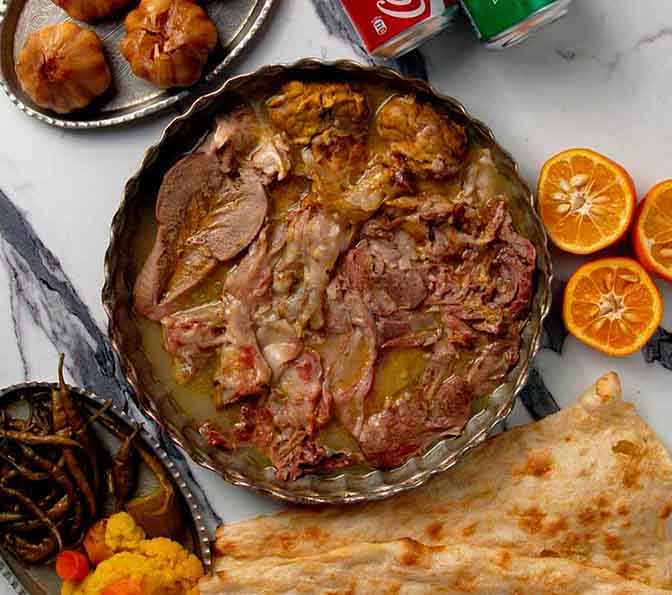







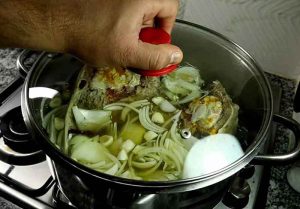
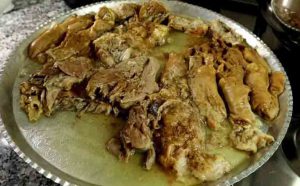


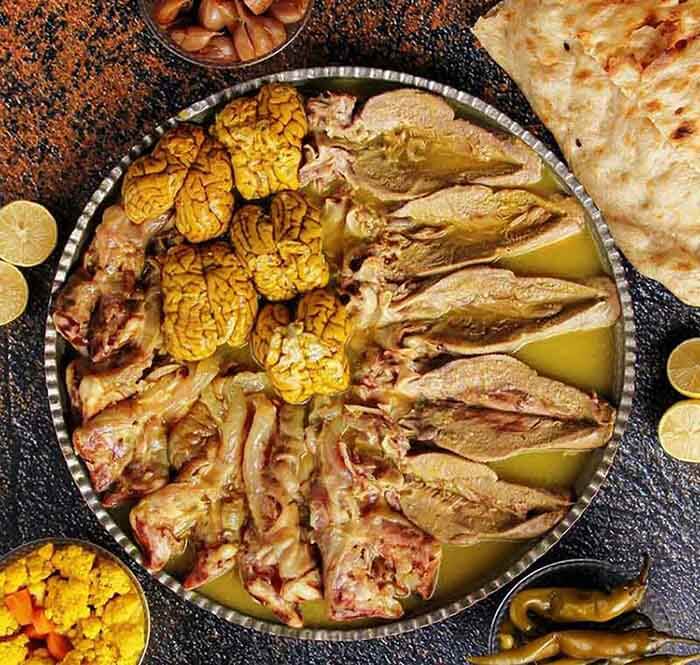





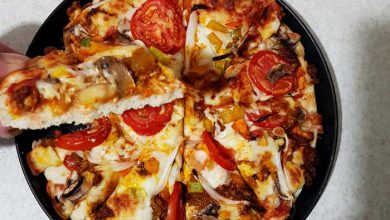
Are you sure this food is delicious????????
Yes, don’t look at its appearance, it tastes great
How many calories in this sheep head and feet?
Hi dear Hana Each 100 grams of kaleh pache has about 350 calories
Hi dears
Can you also give some tips about the disadvantages of kaleh pacheh?
Thankful
Hi dear Katrina, kale pacheh, especially the brain, contains a lot of cholesterol, and for this reason, it causes the level of uric acid in the blood to rise. An increase in the level of uric acid in the blood leads to unpleasant side effects, among which we can mention the increased risk of gout and kidney problems.
Hi mr Mohsen , What is served with kale pacheh?
Can i served with this food pickled garlic?
Hi dear Ferancisca, along with kale pache is served sir torshi and zeytoon parvardeh, yes you can served this.
What is the meaning of kale pache?
Head and Legs of sheep is called Kaleh Pache
I traveled to Iran with my friend two years ago and I was scared when I saw this food
Because the cooked sheep’s head was very strange to me
But with the secrets of my friend, when I ate a piece of sheep’s tongue, I realized how delicious offal it is
These photos and step by step recipes reminded me of those days, thank you very much
Hello my dear friend, thank you for sharing your experience with me
Yes, Kale pache is very strange and maybe scary for someone who has never eaten this food
But once you try and taste the great taste of this dish, you will not be able to give it up
By the way, the best part of this dish is the sheep’s tongue, which is very delicious and excellent, with a little lemon juice and stone bread, it will bring you an unforgettable taste.
Hi chef Haghighi
What is Kale Pache made of?
Hi dear Mahoor Generally, kale pache is made of cooking the head, hands, and feet of sheep. The components of this food also include ears, tongue, brain, eyes, facial meat, and legs. The juice of this dish is eaten as an appetizer with bread.